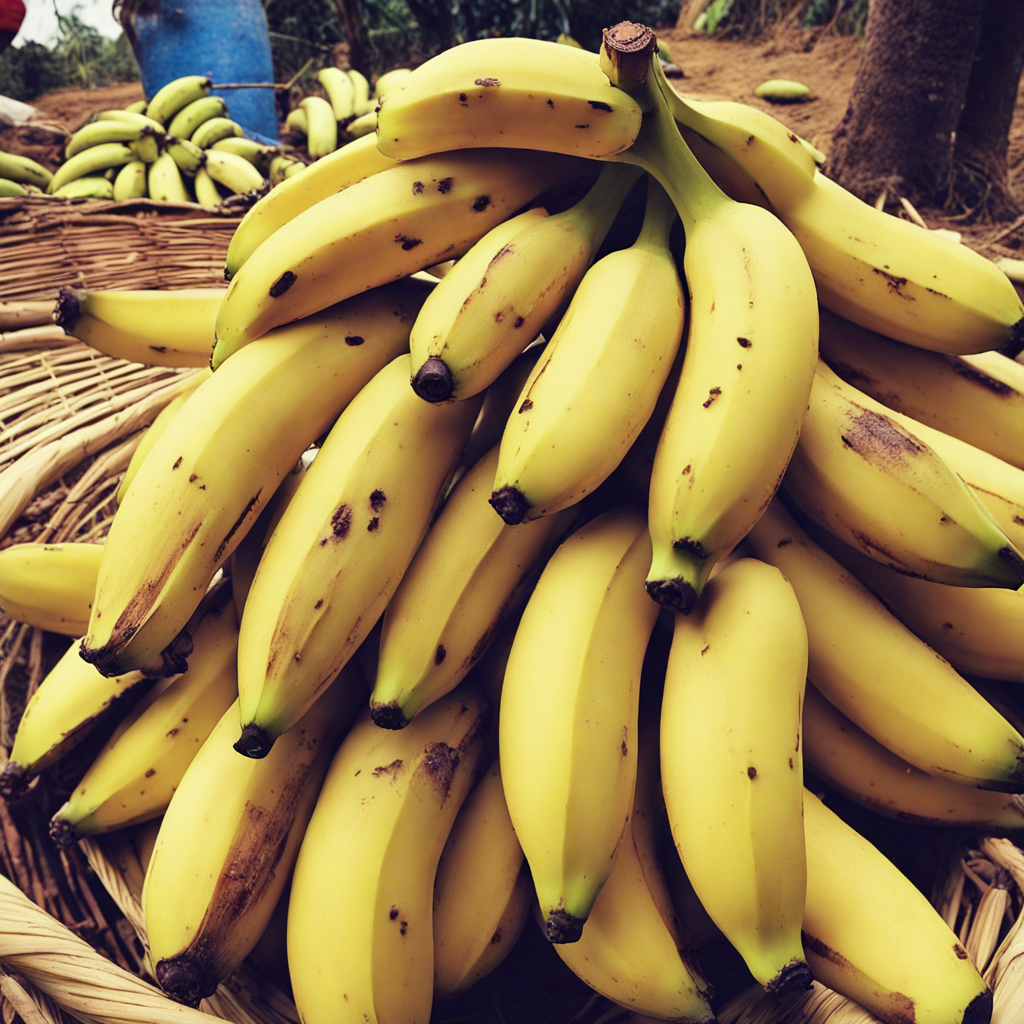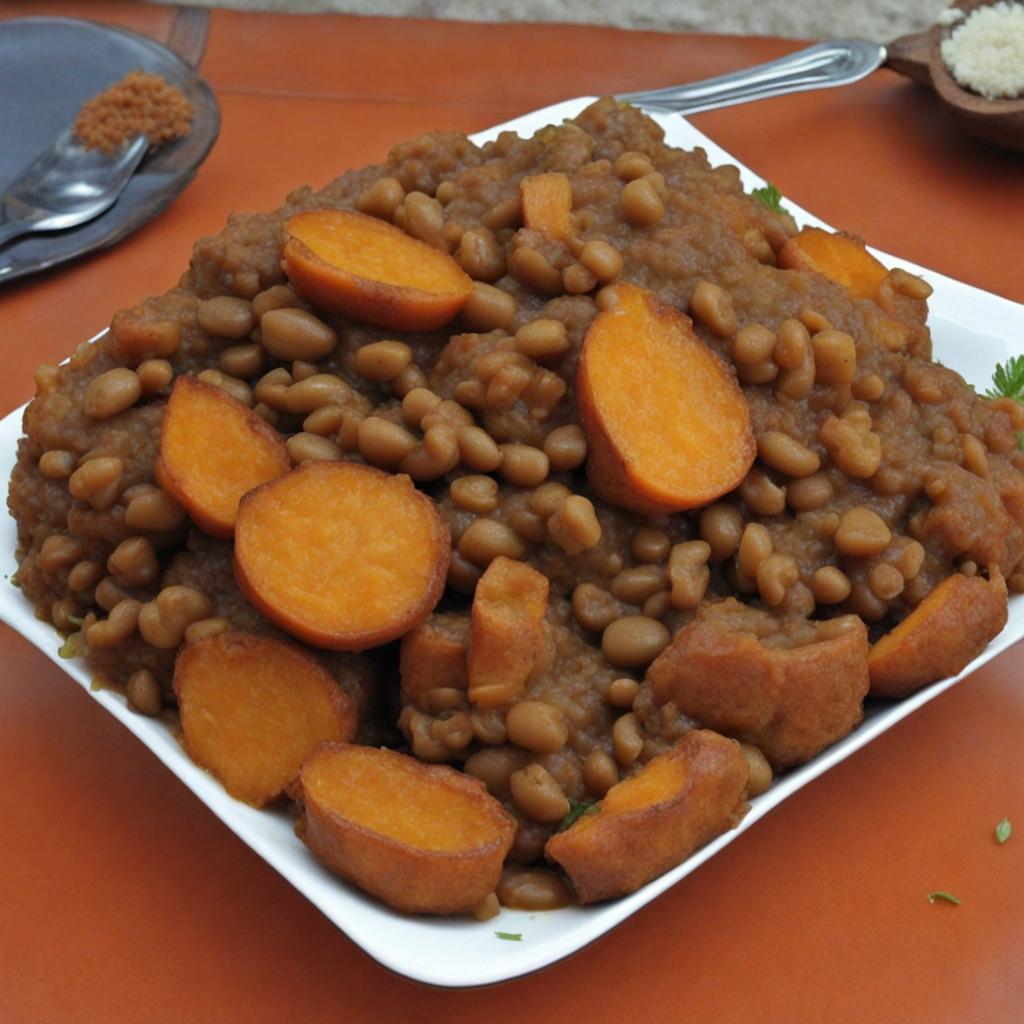Umuneke
Umuneke is a traditional Rwandan dish that highlights the country's rich agricultural heritage, primarily featuring the starchy, nutrient-dense plantain. The dish is prepared by boiling ripe plantains until they achieve a soft, creamy texture. This cooking method allows the natural sweetness of the fruit to emerge, creating a delightful balance of flavors that is both comforting and satisfying. Umuneke is often enjoyed as a staple side dish, providing a perfect accompaniment to various protein-rich meals, such as grilled meats or stews, making it a versatile addition to any Rwandan feast. What sets Umuneke apart is its unique preparation method, where the boiled plantains are sometimes mashed or blended with a touch of local butter, resulting in a smooth, buttery consistency. This preparation enhances the natural flavors and brings a luxurious mouthfeel that complements the dish. The addition of local spices or herbs can also elevate the taste, allowing for a personalized touch that reflects the region's culinary diversity. The dish is often served warm, inviting diners to savor its comforting essence. Beyond its delicious profile, Umuneke embodies the communal spirit of Rwandan dining. It is frequently shared among family and friends during gatherings, symbolizing togetherness and the celebration of local produce. The bright yellow hue of the plantains not only makes for an appealing presentation but also represents the vibrant culture of Rwanda. For those eager to explore new tastes, Umuneke offers a delightful experience that captures the heart of Rwandan cuisine, presenting a harmonious blend of simple ingredients transformed into something truly special.
How It Became This Dish
Umuneke: A Culinary Journey Through Rwanda’s History Umuneke, a traditional dish from Rwanda, is more than just food; it is a reflection of the country’s rich cultural tapestry, its agricultural practices, and the resilience of its people. As we delve into the history of Umuneke, we uncover layers of meaning that highlight the interplay between food, identity, and community in Rwanda. Origins of Umuneke Umuneke, known for its unique flavor and nutritional value, primarily consists of sweet potatoes or other tubers, often combined with local ingredients such as beans, groundnuts, and various spices. The origins of Umuneke can be traced back to the agricultural practices of the Bantu-speaking peoples who migrated to the region around the 7th century. They brought with them knowledge of agriculture and various crops, including sweet potatoes, which thrived in Rwanda's volcanic soil. The sweet potato, a staple in the Rwandan diet, was revered not only for its taste but also for its nutritional benefits. Its adaptability to various growing conditions made it an essential crop for subsistence farming in the high-altitude regions of Rwanda. The incorporation of other local ingredients into Umuneke reflects the resourcefulness of Rwandan cooks, who historically utilized what was available to create hearty and satisfying meals. Cultural Significance Food in Rwanda is deeply intertwined with cultural identity and communal life. Umuneke, like many traditional Rwandan dishes, is often prepared during important ceremonies, communal gatherings, and family celebrations. The act of cooking and sharing Umuneke fosters a sense of togetherness, reinforcing bonds among family members and the wider community. In Rwandan culture, meals are typically communal, with people sitting together and sharing food from a common pot. This practice not only emphasizes the importance of unity but also reflects the values of hospitality and generosity that are central to Rwandan society. Umuneke, served alongside other traditional dishes such as isombe (cassava leaves) and akabenz (grilled pork), becomes a symbol of abundance and sharing. Moreover, Umuneke carries historical significance that resonates with the Rwandan Genocide of 1994. In the aftermath of the tragedy, the act of cooking and sharing meals like Umuneke became a means of healing and rebuilding community ties. It served as a reminder of resilience, hope, and the importance of maintaining cultural practices amidst the scars of history. Development Over Time As Rwanda has evolved, so too has Umuneke. The dish has adapted to changes in agricultural practices, economic conditions, and culinary influences. Post-genocide, there was a renewed focus on agricultural development, which led to improved farming techniques and crop diversification. This agricultural renaissance allowed for greater access to a variety of ingredients, enhancing the flavors and nutritional value of Umuneke. In contemporary Rwanda, Umuneke has also found its way onto the plates of urban dwellers, particularly in Kigali, the capital. Here, modern restaurants and eateries have begun to reinterpret traditional dishes. Chefs experiment with Umuneke by incorporating international flavors and presentation styles, making it a symbol of Rwanda's culinary renaissance. These modern adaptations serve to introduce Umuneke to a global audience, showcasing Rwandan cuisine's richness and diversity. The rise of food tourism in Rwanda has also played a role in the evolving narrative of Umuneke. Tourists seeking authentic culinary experiences are increasingly drawn to traditional Rwandan dishes, and Umuneke has become a staple on local menus. Cooking classes and food tours that highlight traditional Rwandan foods often feature Umuneke, allowing visitors to connect with the culture while savoring the flavors of the region. Nutritional Aspects Nutrition plays a critical role in the significance of Umuneke. The dish is not only filling but also rich in vitamins, fiber, and essential nutrients. Sweet potatoes, the primary component, are known for their high beta-carotene content, which is crucial for eye health and immune function. When combined with beans and nuts, Umuneke offers a balanced meal that provides protein, healthy fats, and complex carbohydrates. In a country where food security has historically been a concern, Umuneke represents a sustainable approach to nutrition. Its ingredients are often sourced locally, promoting agricultural self-sufficiency and supporting local economies. The reliance on indigenous crops exemplifies the Rwandan ethos of sustainability and respect for local resources. Modern-Day Relevance In the 21st century, Umuneke continues to hold a special place in the hearts of Rwandans. It is often featured in national events, festivals, and cultural exhibitions that celebrate Rwandan heritage. The dish serves as a reminder of the country’s agricultural roots and the importance of preserving traditional food practices in an increasingly globalized world. The Rwandan government has also recognized the importance of traditional foods like Umuneke in promoting national identity and cultural pride. Initiatives aimed at reviving and promoting traditional agriculture, including the cultivation of indigenous crops, have been launched to ensure that future generations continue to appreciate and enjoy these culinary treasures. Conclusion Umuneke is more than just a dish; it is a culinary embodiment of Rwanda’s history, culture, and resilience. From its origins in ancient agricultural practices to its modern-day interpretations, Umuneke tells the story of a people who have used food as a means of connection, healing, and celebration. As Rwanda continues to navigate its path forward, Umuneke stands as a testament to the power of food in shaping identity, fostering community, and preserving cultural heritage. It invites both Rwandans and visitors alike to partake in a shared experience, one that transcends time and reflects the enduring spirit of a nation.
You may like
Discover local flavors from Rwanda







